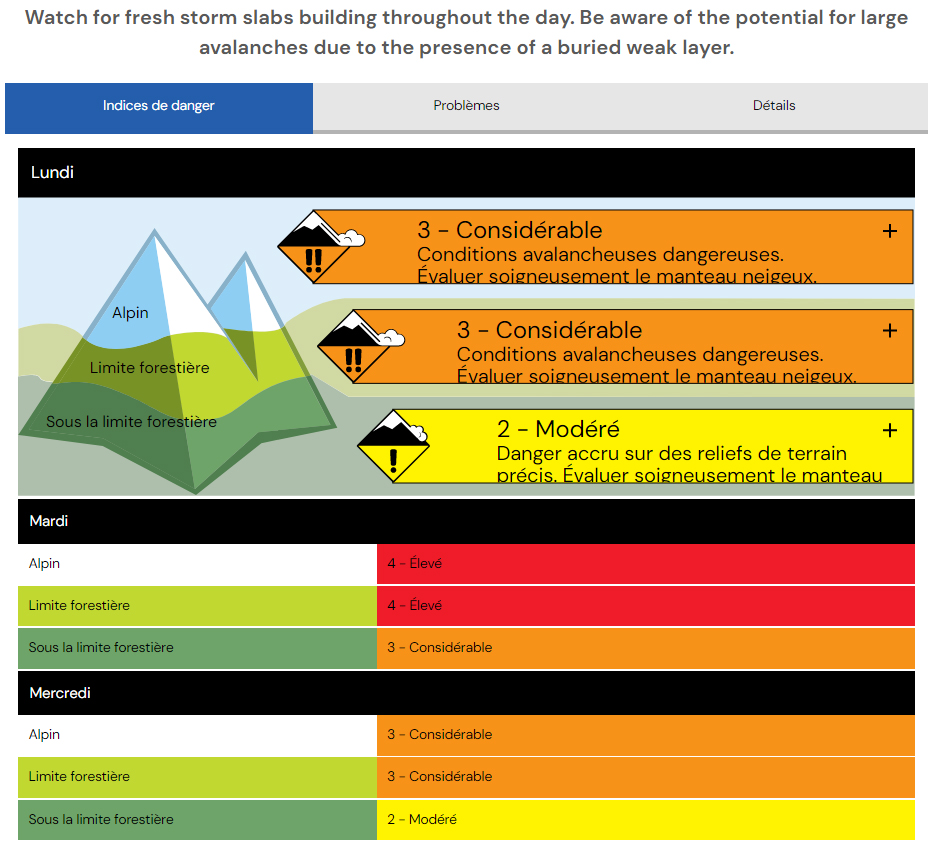Fresh to the backcountry?
Welcome to your introduction to avalanche safety!Avalanches might not be the first thing on your mind when you're exploring the mountains, but knowing how to stay safe from avalanches is an important part of travelling in the winter environment.
This page briefly explains some of the most important things to know before you set out. If you'd like to know more, we recommend taking our online tutorial, Avy Savvy, before taking an Avalanche Canada Training course.

What is avalanche terrain?
Avalanches can happen anywhere where the terrain is steep enough. Once a slope is larger than 10m x 10m (about the size of a tennis court) it could have enough snow on it to create an avalanche that’s dangerous to a person.
Steep Slopes
Most avalanches happen on slopes that are between 30° and 45°.
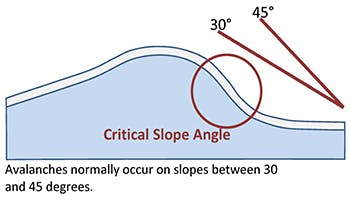
Convex Slopes
Convex rolls on a slope are trigger points—places where avalanches are likely to start. You can also be at risk when you are directly under these convex rolls.

Cornices
Cornices develop when wind-deposited snow forms an overhanging shelf along ridges and above slopes. Cornices are unstable and should be avoided, whether you are on the ridge, or below it.
Avalanche Paths
In a forested area, avalanche paths are identified by the openings in the trees. In the alpine, avalanche paths are identified by slope steepness and shape. Even if you are on low-angle or flat terrain, it’s important to always be aware of the possibility of avalanche slopes above you.
Look Around You!
You don't have to be doing anything extreme in the mountains to find yourself in avalanche terrain, as this video demonstrates. Calgary Realtor Bryon Howard was running on a trail around Lake Louise, Alberta, when an avalanche came down a slope across the valley from him. Fortunately the avalanche wasn't a very big one and he was only dusted by the powder cloud. However, that slope can easily produce much bigger avalanches, and the results could have been much more serious. This is a great example of the need to be aware of not only where you are, but also what’s above you.

Terrain Traps
A terrain trap is any terrain feature that makes the consequence of an avalanche more serious. Steep-sided depressions, such as gullies, creek beds, and ditches will trap moving snow and cause the avalanche to accumulate much more deeply in a small area. Trees, rocks, and cliffs can lead to greater injury if you’re caught in an avalanche.

Terrain traps might include:
Gullies, creek beds, ditches
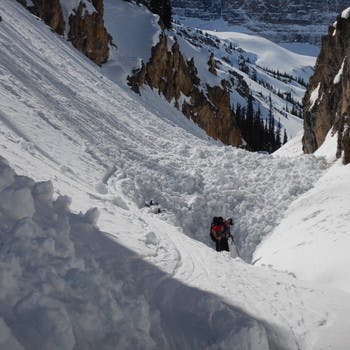
Cliffs
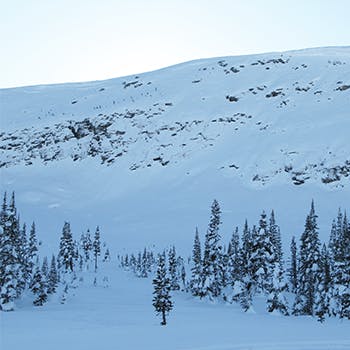

Flat areas under steep slopes
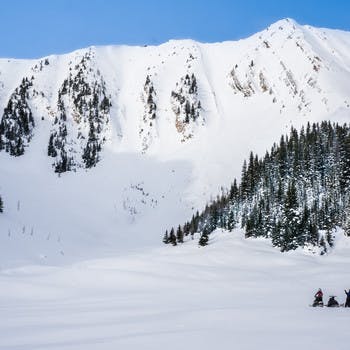
Trees or rocks in slide paths
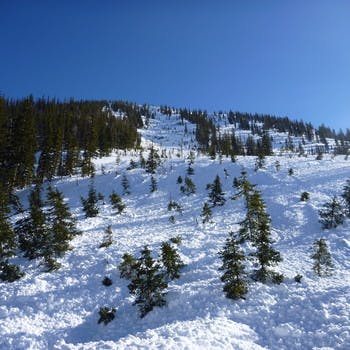

Trailhead Signs
Look for signs at the trailhead that warn you of avalanche terrain. These signs indicate which areas are more, or less likely to produce avalanches. These signs do not exist at all trailheads. In the mountains, you are likely to encounter avalanche terrain in areas that don't have warning signs.
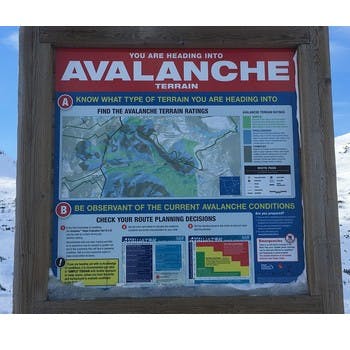

What are Avalanche Conditions?
Avalanches are more likely when there has been:
Heavy snowfall
Heavy snow is when 30 cm or more falls over 48 hours, or if 2 cm of snow (or more) has fallen every hour for several hours.

Wind
Wind moves snow from one place to another. This can result in dangerous wind slabs on the lee, or downwind, side of ridges and high features. A sign that the wind might have affected the snow are lines like these on the surface. If there has been recent drifting, there are probably wind slabs.

- Credit
- Wren McElroy
Warming
Strong sunshine, warm temperatures, and rain all have a destabilizing effect on the snow. The first warming (close to 0° or warmer) after a storm is often when avalanches occur.

What does snowpack instability look like?
There are some warning signs you can look and listen out for that tell you the snowpack is unstable and avalanches are more likely. If you see or hear any of these signs, it is best to stay away from avalanche terrain and avoid being under any areas that might avalanche. If you don't see any signs of instability, it does not mean that avalanches are not possible.
Shooting Cracks
If you see cracks shooting out from under your weight, that is a clear sign of unstable snow.
Recent avalanches
If you witness avalanches, or see signs of recent avalanche activity, that is a sign of instability.
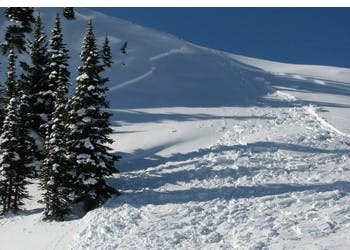
WHUMPFs
A whumpf is the sound the snowpack makes when layers are collapsing within it. It sounds exactly like the word sounds. Whumpfs indicate instability and can signal the start of an avalanche in avalanche terrain.

Understanding the avalanche forecast
The avalanche forecast tells you how likely avalanches might be on a certain day in a certain area, based on the snowpack and the weather forecast. You can find the danger rating at the top of the forecast. This is the first place to look before planning your trip.
Every forecast covers a region and the danger rating of low, moderate, considerable, high or extreme is given for each elevation band in that area. A forecast is issued for the current day and the next two following days. This three-day forecast allows you to plan ahead.
